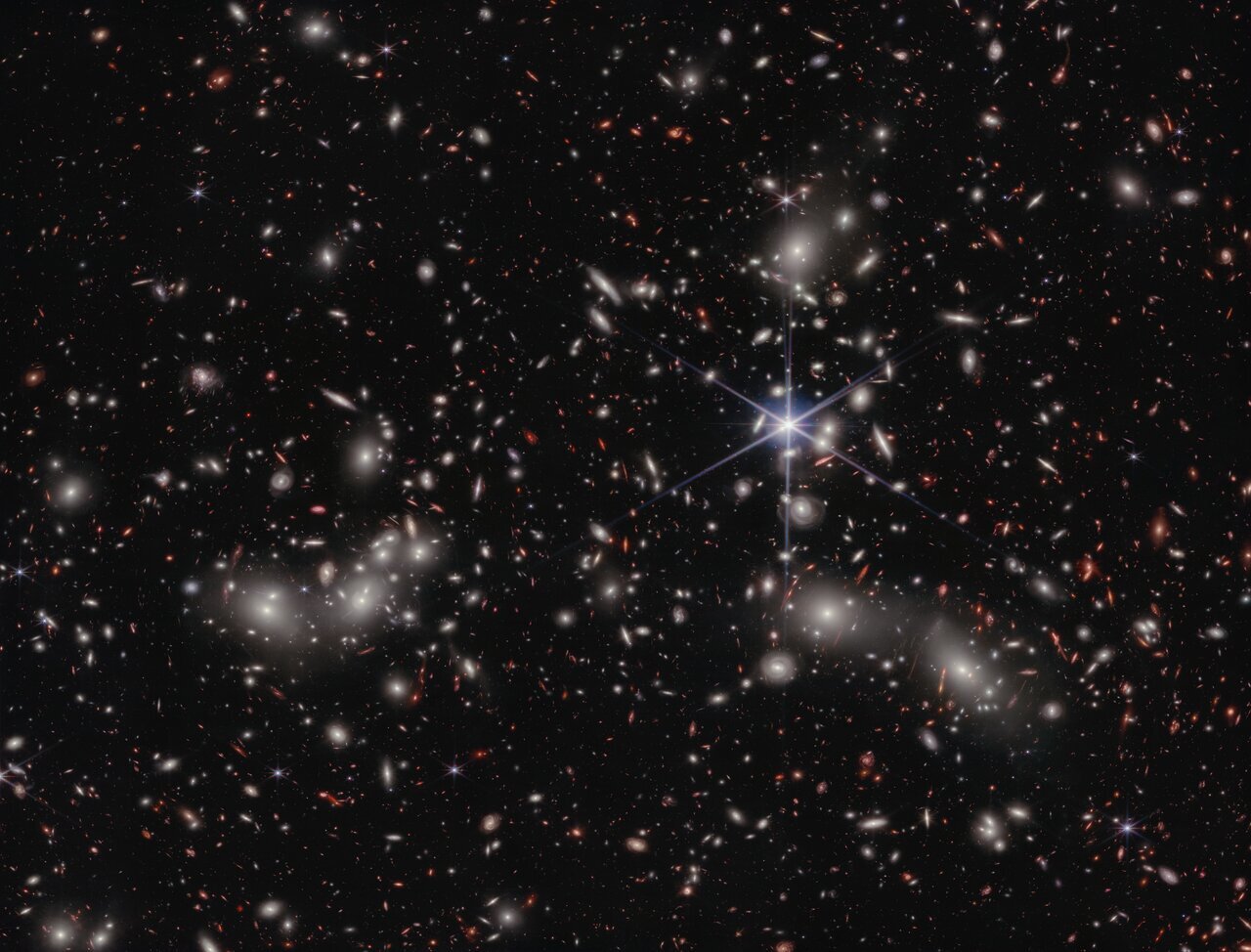Scientists have found dwarf galaxies involved in the reionization of the early universe. They were helped in this by the NIRSpec spectrograph installed on the James Webb Space Telescope.

Dwarf galaxies
Using the unprecedented capabilities of the NASA/ESA/CSA James Webb Space Telescope, an international team of scientists has obtained the first spectroscopic observations of the faintest galaxies during the first billion years of the universe’s existence. These new results demonstrated that small dwarf galaxies were once powerful sources of high-energy radiation.
The study of the evolution of the early universe is an important aspect of modern astronomy. Much remains to be understood about the period in the early history of the universe known as the Epoch of Reionization. It was a period of darkness without stars and galaxies, filled with a thick fog of hydrogen gas, until the first stars ionized the gas around them and light began to penetrate through it.
Astronomers took decades trying to identify sources that emitted radiation powerful enough to gradually disperse the hydrogen haze that covered the early universe. An international team of astronomers used the gravitational lensing effect of the Abell 2744 object, also known as Pandora’s Cluster, to investigate the sources of the reionization period of the universe.
Detection of faint galaxies in the early Universe
Gravitational lensing magnifies and distorts the view of distant galaxies, so they look completely different from those in the foreground. Star systems may look like bright arcs and spots, but their spectrum is preserved.
The magnification effect allowed the team to study very distant light sources beyond Abell 2744, discovering eight extremely faint galaxies that would otherwise be invisible even to Webb. The team has discovered that these faint galaxies are powerful sources. It is four times more powerful than previously thought. This means that most of the photons that reionized the universe probably came from these dwarf galaxies.
To reach this conclusion, the team first combined data from the JWST ultra-deep images with additional images of Abell 2744 from the Hubble Space Telescope to select extremely faint candidate galaxies in the era of reionization. After that, the characteristics of radiation from distant objects were studied using Near-InfraRed Spectrograph (NIRSpec).
This is the first time that scientists have reliably measured the density of these faint galaxies, and they have successfully confirmed that they are the largest population in the era of reionization. The ionizing power of these star systems was also measured for the first time, which allowed astronomers to determine that they produced sufficiently energetic radiation to ionize the early universe.
Future GLIMPSE observations
In a future Webb observation program called GLIMPSE, scientists will receive the deepest observations of the sky in the entire history of observations. By targeting another galaxy cluster, named Abell S1063, scientists hope to discover even fainter galaxies during the reionization epoch to test whether this population is representative of the large-scale distribution of galaxies.
Since these new results are based on observations obtained in the same field, the scientists note that the ionization properties of faint galaxies may look different if they are located in superdense regions. Therefore, additional observations in another area may provide additional information that will help verify these findings.
GLIMPSE observations will also help astronomers explore the period known as the Cosmic Dawn, when the universe was only a few million years old. This will improve our understanding of the appearance of the first galaxies in the universe.
According to phys.org
Follow us on Twitter to get the most interesting space news in time
https://twitter.comne/ust_magazine


